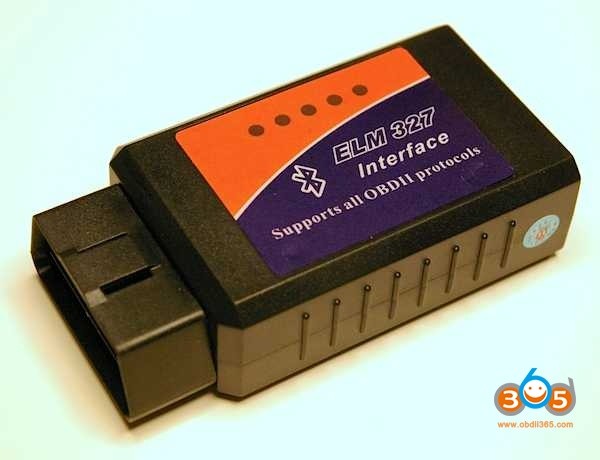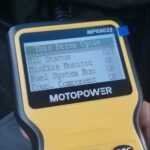Like many, I’m not a hardcore car enthusiast with a professional-grade OBD-II analyzer. However, the allure of incredibly affordable OBD-II USB and Bluetooth adapters from Chinese sources, priced between $9 and $20, was too strong to resist. Sites like obdii365.com offered these tools at prices that made them almost impulse buys.
My quest for OBD-II functionality began with that dreaded check-engine light stubbornly illuminating my dashboard. While I suspected a simple cylinder misfire – a common issue I’ve dealt with before – I saw this as the perfect excuse to finally try one of these budget scanners. Browsing through obdii365.com, I selected an adapter with promising reviews, acknowledging the gamble involved given the low cost.
To my surprise, the OBDII365 adapter worked! It successfully diagnosed the misfire code and allowed me to switch off the engine light. Satisfied yet intrigued, my tech curiosity kicked in, and I decided to investigate what made this cheap device tick. I wondered, just how do they manufacture these so inexpensively?
Here’s the OBD-II dongle, unassuming in its plastic case. The LEDs light up during operation, though their specific signals aren’t clearly documented. For those seeking an even lower profile, smaller, LED-less versions are also readily available.
Initially, I anticipated a snap-fit case, typical of low-cost electronics, but I was wrong. The OBDII365 scanner case is held together with screws, suggesting a slightly higher level of construction than expected at this price point.
Upon opening the case, the internal build quality of the OBDII365 adapter was surprisingly impressive. For such a budget tool, the component placement and soldering appeared well done.
Examining the underside of the PCB reveals a Microchip MCP2551 CAN transceiver, essential for OBD-II communication, along with a 4MHz crystal oscillator. An Advanced Monolithic Systems AMS1117 3.3V LDO voltage regulator, a 78M05 5V regulator, and five LEDs are also visible. The two diodes near the regulator are likely 6.8V Zener diodes for voltage protection.
The soldering quality on the main components is generally excellent, with minimal flux residue. Turning to the topside of the board unveils more key components.
Here, a through-hole LM317 voltage regulator is present. The OBD-II connector pins, while functional, show slight misalignment in their soldering. An unpopulated chip footprint suggests a potential variation for a wired USB version of the device. The prominent IC is a Microchip PIC18F25K80 microcontroller – a surprisingly capable chip for a budget device, featuring CAN, ADC, and ample memory. This microcontroller alone represents a significant portion of the device’s cost.
The Bluetooth module, identifiable by its blue soldermask, appears to be the weakest point in terms of manufacturing quality. Several pins on the module are visibly poorly soldered, raising questions about long-term reliability.
The Bluetooth module incorporates an FM24C64 FRAM (Ferroelectric RAM), a more advanced memory type than standard EEPROM. The adjacent unmarked chip remains unidentified. The lower-right IC is an RDA Microelectronics RDA5869 Bluetooth System-on-Chip (SoC), based on a 55nm ARM7 architecture.
Component date codes suggest recent production. It’s plausible that the firmware on these budget OBD-II scanners is derived from existing designs. While compatibility across various car models and years remains uncertain, it functioned correctly with my 1998 Toyota, fulfilling my basic diagnostic needs.
For users already equipped with a USB OBD-II dongle but desiring Bluetooth connectivity, DIY solutions like avrnoob’s Bluetooth hack offer interesting alternatives.
In conclusion, the OBDII365 scanner offers surprisingly good internal components and basic OBD-II functionality at a very low price. While soldering quality on the Bluetooth module is questionable, and firmware origins are unclear, it can be a viable entry-level tool for simple diagnostics, particularly for older vehicles. However, for professional use or critical applications, investing in a more reputable and thoroughly tested OBD-II scanner might be a safer bet.


